Nuevo registro del invasor Pomacea canaliculata (Lamarck, 1829) en Chile central
DOI:
https://doi.org/10.54830/bmnhn.v70.n2.2021.207Palabras clave:
Invasiones biológicas, no nativas, caracoles, Santiago, AmpullariidaeResumen
A mediados de enero de 2019, se avistaron numerosas nidadas de huevos e individuos adultos activos de Pomacea canaliculata en una laguna artificial en Santiago, Chile. Este caracol de agua dulce es endémico de las cuencas del Bajo Paraná y La Plata, y se ha introducido y se ha establecido en muchas partes del mundo. Esta nueva población, la segunda que se registra en Chile, está situada 190 km al sur de la pequeña laguna costera donde el caracol fue avistado por primera vez en 2009. Se han depositado ejemplares de comprobantes en la colección del Museo Nacional de Historia Natural y Sala de Colecciones Biológicas Universidad Católica del Norte. Este primer informe destaca la necesidad de la erradicación local lo antes posible, a fin de evitar una posible invasión de una de las 100 peores especies exóticas invasoras del mundo.
Descargas
Citas
BÁEZ, P., S. LETELIER, G. ROJAS, A. REBOLLEDO, A. MARTÍNEZ and P. PAREDES.
Patrimonio natural acuático y bioseguridad en los humedales costeros del semiárido de Chile: reflexiones para un estudio de caso, el caracol exótico Pomacea canaliculata. Gestión Ambiental 26: 51-63.
COWIE, R.H., K.A. HAYES, E.E. STRONG and S.C. THIENGO. 2017. Non-native apple snails: systematics, distribution, invasion history and reasons for introduction. In Joshi, R., R.H. Cowie, and L.S. Sebastian (eds): Biology and management of invasive apple snail (pp. 3-32). Philippine Rice Research Institute (PhilRice), Maligaya, Science City of Muñoz, Nueva Ecija.
HAYES, K.A., R.H. COWIE, S.C.THIENGO and E.E. STRONG. 2012. Comparing apples with apples: clarifying the identities of two highly invasive Neotropical Ampullariidae (Caenogastropoda). Zoological Journal of the Linnean Society 166(4): 723-753. https://doi.org/10.1111/j.1096-3642.2012.00867.x
HERAS, H., M.S. DREON, S. ITUARTE, M.Y PASQUIVICH and M.P. CADIERNO. 2017. Apple snail perivitellins, multifunctional egg proteins. In Joshi, R., R.H. Cowie, and L.S. Sebastian (eds): Biology and management of invasive apple snail (pp. 99-117). Philippine Rice Research Institute (PhilRice), Maligaya, Science City of Muñoz, Nueva Ecija.
HORGAN, F., M.I. FELIX, D.E. PORTALANZA, L. SÁNCHEZ, W.M. MOYA RIOS, S.E. FARAH, J.A. WITHER, C.I. ANDRADE and E.B. ESPIN. 2014. Responses by farmers to the apple snail invasion of Ecuador's rice fields and attitudes toward predatory snail kites. Crop Protection 62: 135-143. https://doi.org/10.1016/j.cropro.2014.04.019
JACKSON, D. and D. JACKSON. 2009. Registro de Pomacea canaliculata (Lamarck, 1822) (Ampullariidae), molusco exótico para el norte de Chile. Gayana 73(1): 40-44. https://doi.org/10.4067/S0717-65382009000100006
KYLE, C.H., A.L. PLANTZ, T. SHELTON and R.L. BURKS. 2013. Count your eggs before they invade: identifying and quantifying egg clutches of two invasive apple snail species (Pomacea). PLoS ONE 8(10): 1-11. https://doi.org/10.1371/journal.pone.0077736
LETELIER, S., A.M. RAMOS and L.G. HUAQUÍN. 2007. Moluscos dulceacuícolas exóticos en Chile. Revista Mexicana de Biodiversidad 78: 9-13.
https://doi.org/10.22201/ib.20078706e.2007.002.301
LETELIER, S., A. REBOLLEDO, P. BÁEZ, A. FABRES, S. SOTO-ACUÑA, D. JACKSON, P. MANSILLA and G.A. COLLADO. 2016. The highly invasive freshwater apple snail Pomacea canaliculata (Gastropoda: Ampullariidae) in Northern Chile: morphological and molecular confirmation. The Journal of Zoology Studies 3(5): 119-128.
LOWE, S., M. BROWNE, S. BOUDJELAS and M. DE POORTER. 2000. 100 of the world's worst invasive alien species: a selection from the global invasive species database. Auckland: The Invasive Species Specialists Group of the Species Survival Commission of the World Conservation Union.
MEHTA, S.V., R.G. HAIGHT, F.R. HOMANS, S. POLASKY and R.C. VENETTE. 2007. Optimal detection and control strategies for invasive species management. Ecological Economics 61(2-3): 237-245. https://doi.org/10.1016/j.ecolecon.2006.10.024
SAN MARTÍN, S.R., C. GELMI. J.V. DE OLIVEIRA, J.L. GALO and H. PRANTO. 2009. Use of a saponin based molluscicide to control Pomacea canaliculata snail in Southern Brazil. Natural Product Communications 4 (10): 1327-1330. https://doi.org/10.1177/1934578X0900401003
TAMBURI, N.E. and P.R. MARTÍN. 2011. Effects of food availability on reproductive output, offspring quality and reproductive efficiency in the apple snail Pomacea canaliculata. Biological Invasions 13(10): 2351-2360. https://doi.org/10.1007/s10530-011-0047-2
TEO, S.S.2001. Evaluation of different duck varieties for the control of the golden apple snail (Pomacea canaliculata) in transplanted and direct seeded rice. Crop Protection 20: 599-604. https://doi.org/10.1016/S0261-2194(01)00029-1
THIENGO, S.C., C.E. BORDA and J.L. BARROS ARAÚJO. 1993. On Pomacea canaliculata (Lamarck, 1822) (Mollusca; Pilidae: Ampullariidae). Memórias Do Instituto Oswaldo Cruz 88(1): 67-71. https://doi.org/10.1590/S0074-02761993000100011
YANG, Q.Q., S.W. LIU, C. HE y X.P. YU
Descargas
Publicado
Cómo citar
Número
Sección
Licencia

Esta obra está bajo una licencia internacional Creative Commons Atribución-NoComercial-SinDerivadas 4.0.




